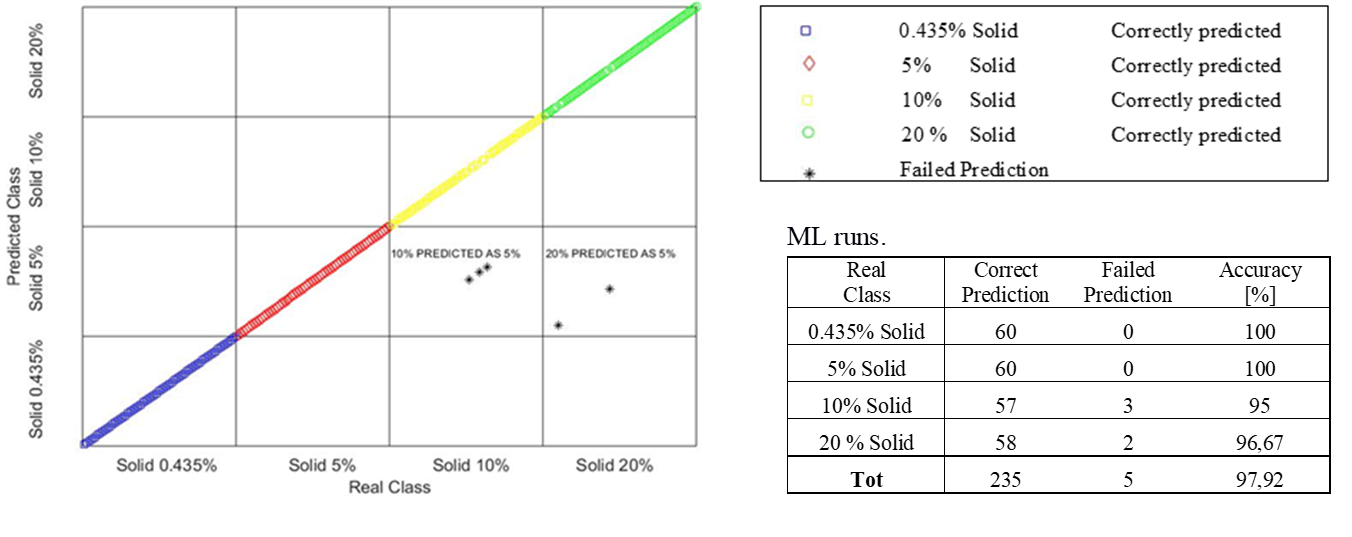(380f) Identification of Suspension State and Solid Particles Physical Properties Using Passive Acoustic Emission and Machine Learning in a Solid-Liquid Mixing System.
AIChE Annual Meeting
2020
2020 Virtual AIChE Annual Meeting
North American Mixing Forum
Mixing in Solid-Liquid Multiphase Systems
Wednesday, November 18, 2020 - 9:15am to 9:30am
This work aims to develop an accurate and reliable sensing methodology using Passive Acoustic Emission (PAE) coupled with Supervised Machine Learning (ML) algorithms, to allow identifying and predicting Solid-Liquid suspension state and physical properties of the solids used i.e. solid concentration, particles size, particles density.
Potential advantages of PAE in process monitoring are to be sensitive, non-intrusive, suitable for on-line applicability and affordable. PAE equipment includes a piezoelectric sensor, placed in contact with the system, an amplifier, a filter, an oscilloscope to record the signal and a computer.
Experiments were carried out in a fully baffled, flat bottom glass reactor (height/diameter, H/T=1, and T=160 mm) equipped with a PBT impeller (D=63mm). Acoustic signals were recorded with sampling frequency of 750 kHz. Impeller speed ranges between 50 to 1,000 rpm and different particle physical properties were investigated, i.e. particle size (250-6000 um), solid loading, solid density (acryl-glass particles).
For each classification run, sampled data were pre-processed using Fast Fourier transformation to reveal any detailed spectral characteristics of the signal in frequency domain. Spectra have been filtered and then reduced by selecting the highest variance frequencies.
The frequency data set has been split in Training Set (60%), Cross validation (20%) and Test Set (20%) and used, respectively, to build the model, to identify the best model parameters (Optimisation step), and finally to check the accuracy (Test Step).
The developed technique has shown excellent results in recognizing spectra corresponding to different Classes, for each ML run. The observed Accuracy was greater than 97% for Solid loading Classification, and close to 100% for all other.
